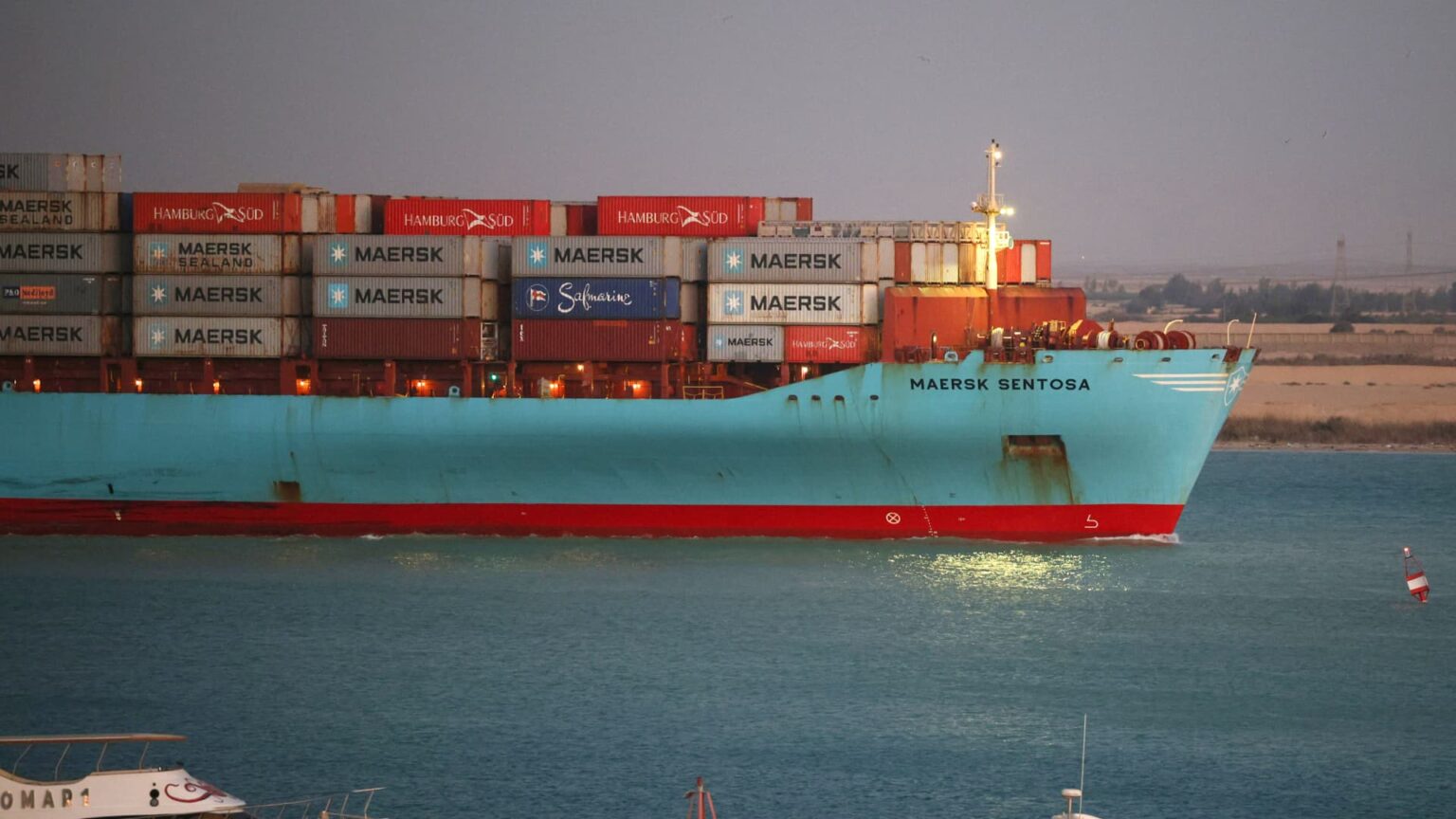Vessels transiting the Red Sea have faced attacks over the past several weeks from Yemen-based Houthis, prompting shipping companies to change routes, leading to a spike in freight rates.
Embarking on longer detours around the Cape of Good Hope in South Africa have pushed ocean freight rates by up to $10,000 per 40-foot container, as container ships have diverted more than $200 billion of goods away from the Red Sea waterway to avoid strikes by Houthi militants.
U.S.-owned commercial vessel, the Gibraltar Eagle, was struck by Houthi militants on Monday, the U.S. Central Command said.
Some market watchers expect the disruptions could bring about a reversal in fortunes of an industry that was mired in a recession last year.
“As to the higher rates in 2024, this could add multiple billions to the bottom line of the VOCC even if this lasts for just another two or three weeks,” Alan Baer, CEO of logistics company OL USA, told CNBC in an email.
If this goes on for three to six months the [profits] will again slowly approach 2022 levels.
Vessel-Operating Common Carriers (VOCC) are ocean carriers that own and operate vessels responsible for managing cargo and transporting them. Maersk, Evergreen and COSCO are some prominent VOCCs.
“If this goes on for three to six months the [profits] will again slowly approach 2022 levels as the operating expenses should be lower than what the carriers experienced during the 2021 and 2022 chaos,” Baer said.
Shipping slump of 2023
The global shipping industry has been in a slump, dragged down by high inventories and consumer spending pullback which led to several bankruptcies last year. Before the Red Sea attacks, global shipping container rates had more than halved from 2022, a stark reversal from the boom following the pandemic.
Asia-Europe rates averaged around $1,550/FEU in 2023, but have now more than doubled to over $3,500/FEU, a recent Jefferies research note said. FEU is a standard unit for measuring for a 40-foot shipping container capacity, which is usually the largest standard size for container vessels.
“When we were in November, we pretty much saw the bottom … the rates were just bottom of the barrel,” said Paul Brashier, vice president of drayage and intermodal at ITS Logistics. He noted that the abysmal rates extended to not just shipping but also trucking. This was not always the case.
Container shipping companies earned profits of $364 billion in 2021 and 2022 combined, according to data from the John McCown Container Report, an industry compendium, which are jaw-dropping when compared with the cumulative loss of $8.5 billion that the industry saw from 2016 to 2019.
But the industry’s net income plunged 95.6% year on year to $2.6 billion in the third quarter of 2023.
While the recent spikes in freight rates might not help shippers relive their glory days following the pandemic, they would substantially boost profitability.
Container liner profitability is expected to recover in the first quarter of 2023 with the current price hikes, ING’s Senior Economist Nico Luman said in a report last week.
Additionally, brokerage Jefferies said it has “raised significantly” the 2024 earnings forecasts for some shipping giants on the back of “higher utilization, higher capacity and a tighter supply/demand balance as a result of vessel re-routing away from the Red Sea.”
The brokerage has lifted Maersk’s 2024 EBITDA forecast by 57% to $9.3 billion, Hapag Lloyd’s by over 80% to $4.3 billion, and raised ZIM’s by 50% to $0.9 billion.
“We are forecasting the freight recession coming to an end this year, more than likely late third quarter,” said ITS Logistics’ Brashier.
Higher rates for longer?
As Red Sea tensions continue to ratchet up with the U.S. and Britain launching strikes against Houthi targets, and the rebel group vowing to respond, rates may not slip any time soon.
Brashier noted that both contracted rates for ocean carriers and spot market rates may rise further.
Contracted rates, which are currently being negotiated, are usually put in place around January to March per year and are locked in for the rest of the calendar year.
The upcoming Chinese Lunar New Year could also drive rates up ahead of closures for the holiday, said Brashier. The holiday traditionally sees an increase in exports out of Asia as companies try to transport more freight before businesses in Asia go offline for at least two weeks.
Overall, container freight will still [find it] difficult to manage oversupply issue.
Daejin Lee
Global Head of Research at Fertistream
Other industry watchers think it’s still too early to make definitive forecasts.
LSEG’s Lead Shipping Analyst Amrit Singh told CNBC that while the higher rates are expected to help companies profit to some extent, it is largely contingent on how long the disruption continues.
“Involvement by various multinational navies including the U.S. Navy may deter further attacks on ships, leading to freight rates correction,” he said. The U.S. in December launched a multinational maritime force, Operation Prosperity Guardian, in an effort to protect trade in the key waterway.
Additionally, there is also the issue of an oversupply of containers.
Container lines went on a vessel buying spree following record profits following the pandemic, many of which arrived in 2023 and led to overcapacity in the container market.
“Overall, container freight will still [find it] difficult to manage oversupply issue,” said Global Head of Research at Fertistream, Daejin Lee.
The demand for shipping is still soft, and the latest developments in the Red Sea are helping the carriers absorb some of this excess capacity, said Rahul Kapoor, global head of shipping analytics and research at S&P Global.
“This is worse than Evergiven … but it’s not as bad as Covid,” he said. “What we saw [during] Covid was a worldwide disruption.”
Read the full article here













